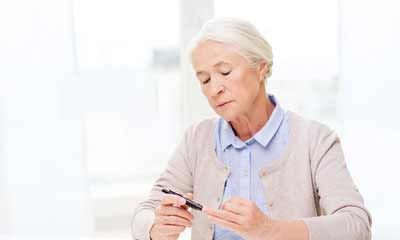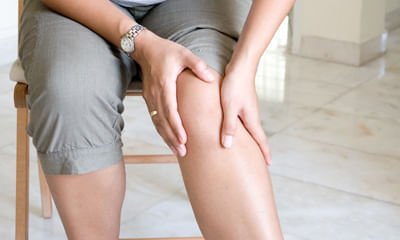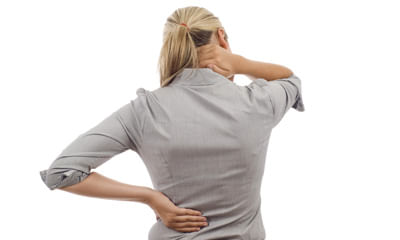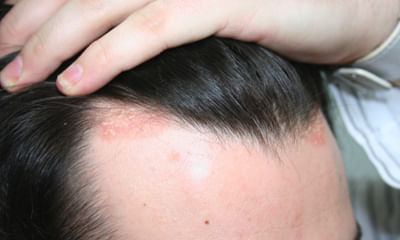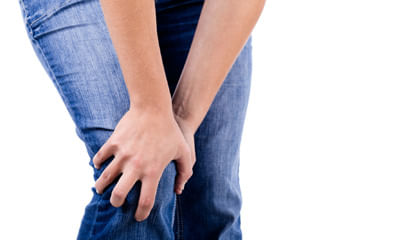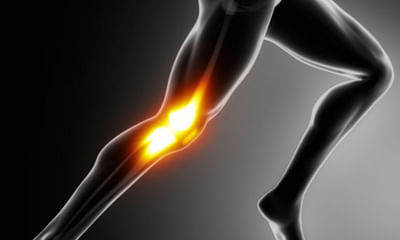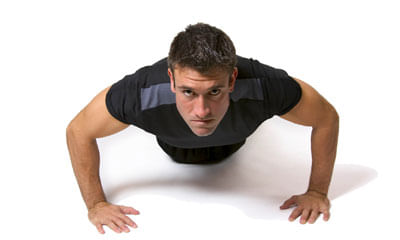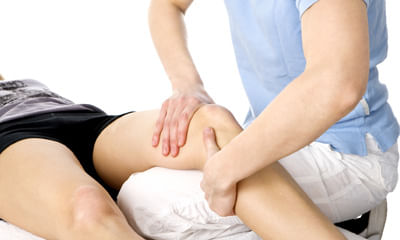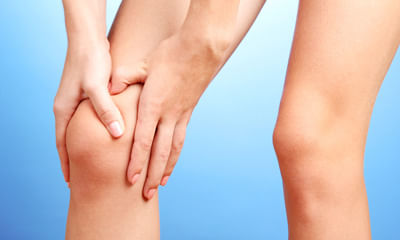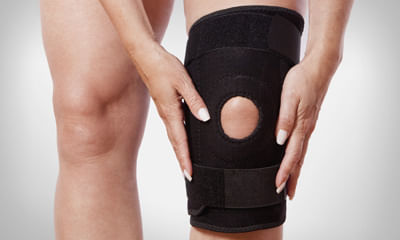Swelling On Inside Of Knee
Doctor my mother has osteoarthritis is it curable its in initial stage is it curable and may I know how long it takes to ...
Ask Free Question
Symptoms of arthritis symptoms of osteoarthritis may include joint pain and progressive stiffness that develops gradually. Symptoms of may include painful swelling, inflammation, and stiffness in the fingers, arms, legs, and wrists occurring in the same joints on both sides of the body, especially upon waking up in the morning. Knee arthritis can be painful and debilitating. For osteoarthritis (oa) of the knee, self-care early on can often help significantly. It is important to stretch and strengthen the surrounding leg muscles to provide more support and reduce stresses around the joint. The following best bet exercises will help you get started on your path to feeling stronger, more flexible and more active. Remember: exercise should not be painful – if you experience pain, discontinue and consult with your physician. Advice: 1.must take adequate rest 2.apply hot water with mild heat with cotton towel 3.avoid cross leg sitting and long time standing 4. Put the small size chair under the ankle during sitting in the chair for leg elevation 5.do the exercise given below 2 times per day 1.quadriceps setting exercise helps to strengthen the quadriceps muscle (the big muscle on the front of the thigh), an important stabilizer of the knee. Lie on your back with the leg you want to exercise straight. Place a small rolled towel underneath the knee. Slowly tighten the muscle on top of the thigh (quadriceps) and push the back of the knee down into the rolled towel. Hold contraction for 5 seconds and then slowly release, resting 5 seconds between each contraction. Perform 3 sets of 10 repetitions, 1 time daily. 2.straight leg raise also helps to strengthen the quadriceps muscle. Lie on your back with the leg you want to exercise straight. The other knee should be bent to support your lower back. Tighten the muscle on the top of your thigh and lift to the level of your other knee. Slowly lower. Perform 3 sets of 10 repetitions, 1 time daily. Knee pain •patellar tendinitis: •risk factor •a combination of factors may contribute to the development of patellar tendinitis, including: •physical activity. •running and jumping are most commonly associated with patellar tendinitis. Sudden increases in how hard or how often you engage in the activity also add stress to the tendon, as can changing your running shoes. •tight leg muscles. Tight thigh muscles (quadriceps) and hamstrings, which run up the back of your thighs, can increase strain on your patellar tendon. •muscular imbalance. •if some muscles in your legs are much stronger than others, the stronger muscles could pull harder on your patellar tendon. This uneven pull could cause tendinitis. •chronic illness. •some illnesses disrupt blood flow to the knee, which weakens the tendon. Examples include kidney failure, autoimmune diseases such as lupus or rheumatoid arthritis and metabolic diseases such as diabetes. •complications •if you try to work through your pain, ignoring your body's warning signs, you could cause increasingly larger tears in the patellar tendon. Knee pain and reduced function can persist if you don't tend to the problem, and you may progress to the more serious patellar tendinopathy. •prevention •to reduce your risk of developing patellar tendinitis, take these steps: •don't play through pain. As soon as you notice exercise-related knee pain, ice the area and rest. Until your knee is pain-free, avoid activities that put stress on your patellar tendon. •strengthen your muscles. Strong thigh muscles are better able to handle the stresses that can cause patellar tendinitis. Eccentric exercises, which involve lowering your leg very slowly after extending your knee, are particularly helpful. •improve your technique. To be sure you're using your body correctly, consider taking lessons or getting professional instructions when starting a new sport or using exercise equipment. •therapy •a variety of physical therapy techniques can help reduce the symptoms associated with patellar tendinitis, including: •patellar tendon strap. A strap that applies pressure to your patellar tendon can help to distribute force away from the tendon and direct it through the strap instead. This may help relieve pain. •iontophoresis. This therapy involves spreading a corticosteroid medicine on your skin and then using a device that delivers a low electrical charge to push the medication through your skin. •platelet-rich plasma injection. This type of injection has been tried in some people with chronic patellar tendon problems. Studies are ongoing. It is hoped the injections might promote new tissue formation and help heal tendon damage. •probably your stamina would've gone down due to over use of the joints and the metabolic activity is more due to running. You need to consume good protein diet so that your body will act as a reservoir. It will help you to fight against rather than affecting one particular area of your body for eg. Knee joint. For knee ligament pain or inflammation you need to keep ice which will help you to prevent the inflammation progressing further. •patellofemoral pain syndrome •usually fully relieved with simple measures or physical therapy. It may recur, however, if you do not make adjustments to your training routine or activity level. It is essential to maintain appropriate conditioning of the muscles around the knee, particularly the quadriceps and the hamstrings. •there are additional steps that you can take to prevent recurrence of patellofemoral •they include: •wearing shoes appropriate to your activities •warming up thoroughly before physical activity •incorporating stretching and flexibility exercises for the quadriceps and hamstrings into your warm-up routine, and stretching after physical activity •increasing training gradually •reducing any activity that has hurt your knees in the past •maintaining a healthy body weight to avoid overstressing your knees •joints, ie. In the upper limbs if the pain is present in the fingers/wrist and in the lower limbs it the pain is present in the toes/ ankle, then we shall definitely say it is rheumatic arthritis. •if your proximal joints (ie. Shoulder, hip & knee has pain) then you can pour hot (warm) water in that area to reduce the inflammation. If you have pain in the distal joints ie. Wrist, fingers, ankle, toes then you can wear either elbow brace or wrist brace which will help you to feel warm and very protective. And also immerse the distal joints in the hot water tub which will help you to reduce the pain. •knee pain during driving or watching movie. •it might due to lack of movements in the knee while the joints are immobilized during driving and while watching movies. It is important that you need to have movements in and around the knee so that the blood flow will not be disturbed. •knee ligament laxity•if you have problem in your legs then it might be due to ligament laxity where your legs would become very weak due to the old ligament injury and that should be treated immediately. •wear knee cap so that you will feel firm while walking or climbing stairs.•this is a general strain and for this you can follow these measures: one keep a pillow right under the knee while sleeping, next is you can keep ice in the painful area for about 5--10 minutes, if pain still persists you can stretch your body by twisting the waist on both sides how we used to do in the school drill similarly you can try! one time you can do hot water fermentation that would help to reduce the muscle strain. •legs becoming numb and also pain is there when the patient walks for 10-15 minutes?•it looks like you are anaemic. If you feel that the legs are becoming numb then keep your legs warm which is important, probably you can wear mcr chappals inside the house/ socks inside the house. Put a door mat when ever you sit so that you will feel comfortable. Also pour warm water in the legs which would help you to get better circulation. •knee pain. If you are overweight, losing weight will also help to reduce pressure on your knee. Knee pain this is a general knee pain and for this you can follow these measures: one keep a pillow right under the knee while sleeping, next is you can keep ice in the painful area for about 5--10 minutes, it looks like you are is important to check that. Anaemia always leads to the symptoms of being tired and also having body pain though there may not be any pathological reasons for knee pain. With knee exercises you will definitely feel better and muscles must be strengthened .•don't play through pain. As soon as you notice exercise-related knee pain, ice the area and rest. Until your knee is pain-free, avoid activities that put stress on your patellar tendon. •strengthen your muscles. Strong thigh muscles are better able to handle the stresses that can cause patellar tendinitis. Eccentric exercises, which involve lowering your leg very slowly after extending your knee, are particularly helpful. •improve your technique. To be sure you're using your body correctly, consider taking lessons or getting professional instructions when starting a new sport or using exercise equipment. •therapy •a variety of physical therapy techniques can help reduce the symptoms associated with patellar tendinitis, includingback pain it looks like you are anaemic. If you have back pain after you sit for long hours then it is due to your haemoglobin levels as it is important to check that. Anaemia always leads to the symptoms of being tired and also having back / leg pain though there may not be any pathological reasons for back pain. It looks like you are anaemic. And also you have to check with your vitamin and calcium, if the bones are weak then automatically the pain gets triggered more as there is less severity of the painbe strengthened 1.resisted terminal knee extension: make a loop with a piece of elastic tubing by tying a knot in both ends. Close the knot in a door at knee height. Step into the loop with your injured leg so the tubing is around the back of your knee. Lift the other foot off the ground and hold onto a chair for balance, if needed. Bend the knee with tubing about 45 degrees. Slowly straighten your leg, keeping your thigh muscle tight as you do this. Repeat 15 times. Do 2 sets of 15. If you need an easier way to do this, stand on both legs for better support while you do the exercise. 2•standing calf stretch: stand facing a wall with your hands on the wall at about eye level. Keep as arthritis is very common that you get generally bilaterally. Ice therapy would definitely help to reduce the inflammation. We also advise you to use knee cap which would help to prevent the knee from damaging further and also to maintain the quadriceps muscle tone •stretching exercises. Regular, steady stretching exercises can reduce muscle spasm and help lengthen the muscle-tendon unit. Don't bounce during your stretch. 3•strengthening exercises. Weak thigh muscles contribute to the strain on your patellar tendon. Exercises that involve lowering your leg very slowly after extending it can be particularly helpful, as can exercises that strengthen all of the leg muscles in combination, such as a leg press.•this is a general knee pain and for this you can follow these measures: one keep a pillow right under the knee while sleeping, next is you can keep ice in the painful area for about 5--10 minutes, it looks like you are is important to check that. Anaemia always leads to the symptoms of being tired and also having body pain though there may not be any pathological reasons for knee pain. With knee exercises you will definitely feel better and muscles must be strengthened.
this is Referred to you by Dr. My sister aged 56 yrs, is having trouble in walking due to degenerative osteoarthritis of ...
Ask Free Question
U can do the following exercises for knee pain url/articles/311138. Php follow these dos and donâts to help your knees feel their best. 1. Donât rest too much. Too much rest can weaken your muscles, which can worsen joint pain. Find an exercise program that is safe for your knees and stick with it. If you're not sure which motions are safe or how much you can do, talk with your doctor or a physical therapist. 2. Do exercise. Cardio exercises strengthen the muscles that support your knee and increase flexibility. Weight training and stretching do, too. For cardio, some good choices include walking, swimming, water aerobics, stationary cycling, and elliptical machines. 3. Donât risk a fall. A painful or unstable knee can make a fall more likely, which can cause more knee damage. 4. Rest, ice, compression, and elevation (rice) is good for knee pain caused by a minor injury or an arthritis flare. Give your knee some rest, apply ice to reduce swelling, wear a compressive bandage, and keep your knee elevated. 5. Don't overlook your weight. If you're overweight, losing weight reduces the stress on your knee. You donât even need to get to your "ideal" weight. Smaller changes still make a difference. 6. Don't be shy about using a walking aid. A crutch or cane can take the stress off of your knee. Knee splints and braces can also help you stay stable. 7. Don't let your shoes make matters worse. Cushioned insoles can reduce stress on your knees. 8. Do play with temperature. For the first 48 to 72 hours after a knee injury, use a cold pack to ease swelling and numb the pain. A plastic bag of ice or frozen peas works well. Use it for 15 to 20 minutes three or four times a day. Wrap your ice pack in a towel to be kind to your skin. After that, you can heat things up with a warm bath, heating pad, or warm towel for 15 to 20 minutes, three or four times a day. 9. Donât jar your joint (s). High-impact exercises can further injure painful knees. Avoid jarring exercises such as running, jumping, and kickboxing. Also avoid doing exercises such as lunges and deep squats that put a lot of stress on your knees. These can worsen pain and, if not done correctly, cause injury. Homeopathy is a very effective for this problem n has very encouraging results. And homeopathic medicines are safe and do not have any side effects at all.
I have pain in my right lower back, right hip and right groin area from the last one month. The pain occurred suddenly w ...
Ask Free Question
1. Spinal decompression how it helps – spinal decompression should be the very first thing you do to treat a herniated or bulging disc because it essentially creates space between your vertebrae, and thus takes pressure off the discs. How to do it – use a bar or the top of a door (or anything you can hang from) and allow your body to “just hang”. – hang for 30 seconds and do 3 sets. – release very slowly from this so as not to cause any spasms. ** this should not cause any pain. If you feel pain during it is not a good one for you. In that case, stop and try some of the other exercises below instead. 2. Standing extension how it helps – this standing extension helps reverse what you do on a daily basis (hunching)… since most bulging discs and herniated discs are caused by poor posture and repeated flexion of the spine (esp bending fwd in bad posture), this stretch helps push the disc back to neutral position. How to do it – begin this exercise by standing up with good posture. Now take both hands and place them on both sides of your lower back. Now with the help of your hands push your pelvis forward and extend your spine back. Follow the extension with your neck so that you end up facing the ceiling. – start with 10 repetitions and do 2-3 sets. – this one is particularly great to do when you need a break from sitting at your desk. ** this should not cause any pain. If you feel pain during it is not a good one for you. In that case, stop and try some of the other exercises below instead. 3. Half cobra pose (prone lumbar extension) how it helps – the half cobra stretch helps to push the disc material back towards the center of the inter-vertebral disc to allow for improved healing. The goal of repeated lower back extension is the “centralization of symptoms”, which basically means pain that travels down the affected leg to the foot should come back up closer to the low back – which will in turn alleviate the pain. How to do it – begin this exercise by lying on your stomach (prone position) and slowly prop yourself up on your elbows while keeping your hips in contact with the floor. – hold the prop-up position for 10-15 seconds before returning to the prone position (lying face down). – gradually increase to holding the end position for 30 seconds. Aim for 10 repetitions of this stretch. ** initially, you may not be able to tolerate this position very well, so make sure you start slowly and carefully. If there’s any pain, try a different exercise instead. 4. Full cobra pose (advanced extension) how it helps – this stretch is based on the same principle as the half cobra pose above. This advanced extension helps to push disc material back towards the center of the intervertebral disc, with the goal of alleviating pain symptoms. How to do it – once you’ve mastered the half cobra pose, you can increase the difficulty by moving to the advanced version of this stretch. Begin this exercise by lying on your stomach in the prone position (lying facing down) and slowly press up on your hands while keeping your pelvis in contact with the floor and lower back relaxed. – hold the prop-up position for 10 seconds. Aim for 10 repetitions of this stretch. – eventually try to hold this pose for longer if it feels good (20-30 seconds). ** if you feel pain during this exercise, it is not a good one for you. In that case, stop and try some of the other exercises instead. 5. Cat-cow how it helps – this is one of the most popular herniated disc exercises. By combining two yoga poses, the cat-cow stretch can help to relieve pressure on the herniated disc by opening the intervertebral disc space. It also improves mobility of the spine, which may help to relieve disc herniation pain and speed recovery. How to do it – begin this stretch on your hands and knees. Inhale and let your stomach “drop” towards the floor as you look up towards the ceiling. – follow this by exhaling and slowly rounding your spine while pressing into the floor with your hands and slightly curving your neck to look at your feet. – aim for 10 repetitions of this stretch and do 2-3 sets. How it helps – this exercise will help strengthen and stabilize your lower back and deep spine muscles. This will help you to maintain a good posture and avoid future episodes of herniated discs. How to do it: – begin on your hands and knees with your hands positioned under your shoulders and knees positioned under your hips. – raise your left arm and reach it forwards until it is aligned with your torso; at the same time, kick your right leg backwards until is it aligned with your torso. – hold this position for 2-3 seconds before slowly returning to the starting position. – repeat with your right arm and left leg. – alternate sides for 10 repetitions and do 2-3 sets. ** ensure that your head, neck, and back maintain a neutral alignment to minimize stress on your neck. Plank: how it helps – just like the bird dog, this “core” exercise will help bring your pelvis into right position by strengthening the deep spinal muscles and glutes (butt muscles). How to do it – begin lying on your stomach with your forearms against the mat. – engage your core and lift your body so that you are resting on your forearms and toes. – start with 10 second holds and work up to 30 second holds, do 2-3 sets. ** ensure to keep your back straight throughout the entire exercise – spine in neutral position. Thoracic expansion if you’re using a chair, sit facing forward and allow your upper body to fall over the back of the chair. Extend your arms above your head for a deeper stretch. Hold either position for 10 seconds and release. Repeat 3 times. .sitting spinal stretch sciatica pain is triggered when vertebrae in the spine compress. This stretch helps create space in the spine to relieve pressure on the sciatic nerve. 1.sit on the ground with your legs extended straight out with your feet flexed upward. 2.bend your right knee and place your foot flat on the floor on the outside of your opposite knee. 3.place your left elbow on the outside of your right knee to help you gently turn your body toward the right. 4.hold for 30 seconds and repeat three times, then switch sides. 6. Standing hamstring stretch this stretch can help ease pain and tightness in the hamstring caused by sciatica. 1.place your right foot on an elevated surface at or below your hip level. This could be a chair, ottoman, or step on a staircase. Flex your foot so your toes and leg are straight. If your knee tends to hyperextend, keep a slight bend in it. 2.bend your body forward slightly toward your foot. The further you go, the deeper the stretch. Do not push so far that you feel pain. 3.release the hip of your raised leg downward as opposed to lifting it up. If you need help easing your hip down, loop a yoga strap or long exercise band over your right thigh and under your left foot. 4.hold for at least 30 seconds, and then repeat on the other sideif you have low back pain and sciatica you can undergo intermittent pelvic traction where in your half of your body weight will be added in the electronic traction so that that would help you to reduce the pain, along with interferential therapy stimulations which would help you to get relieved from the radiating pain. Apply ice for the pain to get subsided immediately. If you cannot go immediately for the physiotherapy treatment. Ice can be kept in the low back where you have back pain. It is suggestible to wear lumbo sacral belt which would help you to build the abdominal muscle tone which itself would make you feel better. You can also wear mcr chappals which would help you to have less weight falling in the painful back. U have to take vitamin d rich foods. Likemilk, cheese, yogurt, brocoli, spinach. U need calcium consumption for increase the bone density. Lackof bone and bones crush inside the body vitamin d intake via supplements or exposure to low levels of sunlight. Vitamin d is used to absorb calcium in the bone and regulate calcium in the blood.this might be due to low calcium or vitamin d which has more impact on the bone density and also it makes one to feel that there is lack of bone strength or in a way the bones are brittle and almost breaking and they feel it is crushed in a way there are many bones breaking at the same time. You have to take vitamin d rich foods. Likemilk, cheese, yogurt, brocoli, spinach. U need calcium consumption for increase the bone density. The best core exercises kindly consult doctor regarding your pain if there is less pain kindly do these exercises to get rid of your pain–bridgethis pose activates your glutes to lift your hips. This trains your core while toning your butt and thighs. Start on your back. Bend your knees and plant your feet on the floor at hip width. Place your hands at your sides, palms down. Tighten your core and glutes. Raise your hips until your knees are in line with your shoulders. Hold for 10–30 seconds. Crunch crunches are a classic core-strengthening move. The act of lifting your upper body works your abdominal muscles. If you have low back pain, do crunches with care. Move slowly and start with just a few reps. Start on your back. Bend your knees and plant your feet on the floor at hip width. Line up your head and spine. Cross your arms across your chest. Tighten your core and relax your neck and shoulders. Tuck in your chin and lift your upper back, keeping your lower back, pelvis, and feet on the floor. Pause. Slowly lower your upper back to return to the starting position. Start with 1 set of 8–12 reps. Plank the plank is a full-body exercise that targets your core. It also strengthens your arms, shoulders, back, glutes, and legs. Start on all fours, with your hands below your shoulders and your knees below your hips. Straighten your legs behind you, keeping your feet hip-width apart. Tighten your core. Hold for 10–30 seconds. To make this exercise easier, place your knees on the floor. Supine toe tap the supine toe tap is a basic pilates exercise. It engages your core muscles while working your glutes, hips, and legs. Toe taps also place minimal pressure on your spine. If you have back pain, toe taps may be an ideal alternative to crunches. Start on your back. Lift your legs, knees bent to 90 degrees. Place your hands at your sides, palms down. Tighten your core. Lower your right foot and gently tap the floor, keeping your left leg still and your back flat. Raise your right leg to return to the starting position. Repeat with your left leg.
I'm 52 years old male. I'm detected psoriasis 22 years ago. Initially I was having a scaly patches periodically. Subsequ ...
Ask Free Question
Physiotherapy and exercise - psoriatic arthritis therapeutic exercises therapeutic exercises are activities based on your exact needs. They are designed to reach a certain goal, eg to increase muscle strength. There are two types used for arthritis: range of motion and strengthening. Range of motion exercises help to maintain joint movement, relieve stiffness and restore flexibility. To increase or maintain range and flexibility you need to take your joints and muscles to their limits. Range of movement exercises should be carried out daily. Strengthening exercises help maintain or increase muscle strength. To strengthen a muscle you need to apply resistance to the movement. This can be done using your own body weight, weights or resistance bands. Strengthening exercises should be performed on alternate days and not when a joint is hot (feels warm when touched) and painful unless you are supervised by a physiotherapist. The following exercises are just some examples to get you started. A health professional can design a programme for your specific needs. Fingers and hands 1. Forearm supported on a table, hand relaxed over the edge. Extend the wrist and clench your fist - relax and let your hand relax. Repeat ten times. 2. Clasp your hands together and support your forearms on a table with your hands over the edge. Bend your wrist up and down. Repeat five times. 3. Forearm on a table, elbow tucked in to your side and palm turned down. Alternately, turn your palm to face up, then down, keeping elbow still. Repeat ten times. 4. Elbow on table with hand up. Straighten your fingers out then bend them to touch your fingertips to the base of your fingers. Repeat ten times. 5. Palm on table. Lift each finger individually off the table. Repeat five times. 6. Elbow on table with hand up. Bring the tip of the thumb to the tip of the little finger, repeat to other fingers in sequence. Repeat five times. Neck and back for the first three exercises sit up straight in a supportive chair, ie one with back support. 1. Tilt your head towards one shoulder until you feel the stretch on the opposite side. Hold for approximately five seconds. Repeat to the other side. 2. Turn your head to one side until you feel the stretch. Hold for approximately five seconds. Repeat to the other side. Repeat five times to each side. 3. Pull your chin in, keeping your neck and back straight (not tipping your head forwards). Hold at the end position and feel the stretch in your neck. Repeat five times. 4. Lie on your back with your hands on your stomach, legs bent at the knee, feet flat on the bed or floor. Tighten your stomach muscles to flatten your lower back against the bed. Hold for five seconds, repeat ten times. 5. Lie on your back as with the previous exercise. Keeping your shoulders down flat, slowly roll your knees from side to side. Hold for five seconds, repeat ten times. 6. Lie on your back as before. Push down through your heels to lift your bottom and lower back off the bed. Hold for five seconds, repeat ten times. Feet and toes 1. Press your toes down and shorten your foot by pulling up the arch on the inside of the foot. Repeat on the other foot. 2. Lie with your legs out straight and pull your feet up, then push your feet down. Repeat ten times. 3. Wiggle your toes. Repeat ten times. 4. Circle your feet around one way, then the other way. Repeat ten times. Hips and knees 1. Lie face down with both legs outstretched for five minutes. Then gently bend each knee to its limit, then relax with your legs straight. Repeat five times with a 30-second break. 2. Sit with your legs outstretched on a firm bed. Press each knee down onto the bed to straighten it. Hold for five seconds. Relax. Repeat five times. 3. Lie on your back with your knees bent up and feet flat on bed. Bend each knee in turn up to meet your stomach, straighten and lower to the bed. Repeat five times. Jaw gently open the mouth to its full width. Stretch a little and hold for five seconds. Then close your mouth completely. Repeat five times. Recreational exercise this type of exercise includes any form of movement or relaxation that refreshes the body and mind. Recreational exercises or activities improve your fitness and help maintain or improve joint range of motion and muscle strength. They add to a therapeutic programme but do not replace it. •swimming is a good all-round exercise that does not stress your joints. Psoriasis is not generally affected by the chlorine in swimming pool water, but if you find it becomes itchy when dry, apply some barrier cream before you swim and after your shower at the end. •walking is another good way of exercising. If your arthritis affects your feet make sure you wear a wellfitting pair of shoes, and insoles if they have been prescribed for you. •cycling can be an alternative to walking and is often more comfortable on the feet. •activities such as yoga, pilates and other complementary therapies may be beneficial for people with arthritis. Contact your local council offices or community centres for further information and details of classes or events.
I am 33 years old. While I wake up in morning my ankles pain so much. After few walking it gets normal. My knees also so ...
Ask Free Question
•do contrast bath ie. Take two tubs in one you can fill hot water (ie. Bearable heat) to immerse the feet in the tub and you will have good effect ie. Warmth effect. Further to that wipe with towel and immerse the feet in the cold water (ie. Ice water bath) which will help you to reduce the inflammation. Once this is done you can do some ankle movements to both the feet which will help you to boost and improve the blood circulation. As I said over the phone please use anklet which I have already sent by whats app and you can use mcrchappals which will help you to reduce the weight falling on the injured front portion of the foot. If you have the habit of using shoes then you can keep removable insoles which can be used inside the shoes and that acts like a shock absorber and which will also help to reduce and prevent the weight falling on the injured foot. This is the way to reduce the inflammation through home remedy. If the pain persists say for example after doing for 5-7 days then you have to consult physiotherapist where they will treat you with infra red radiation. But this is quite a rare treatment, if in case it is not available, let me know we can send it to you by courier. It is quite expensive but you will feel good results with that. This will help you to reduce the inflammation in the bone ie. Which is caused by the table which fell on your foot. You can thrombophob ointment to reduce the contusion and also to loosen and break the blood clot which is there in the front portion of the foot. It will also help you to change the skin colour. If the pain is too much then you can take ultracet tablet every day in the night. Keep two pillows under the ankle while sleeping on the bed which will help you to reduce the swelling. Hope you recover with this. And also please share your feed back if you become better. If you do not become better too pls let us know so that we can give some alternate solution. Please send your address so that we can send the products ie. Anklet to use it in the ankle / foot, mcrchappals for your size and also the removable foot insole.This is a general knee pain and for this you can follow these measures: one keep a pillow right under the knee while sleeping, next is you can keep ice in the painful area for about 5--10 minutes, it looks like you are is important to check that. Anaemia always leads to the symptoms of being tired and also having body pain though there may not be any pathological reasons for knee pain. With knee exercises you will definitely feel better and muscles must be strengthened.
I slipped from my active yesterday, I was in the backseat and my leg is in pain and a part of knee has gone inside meani ...
Ask Free Question
I am sorry to hear about your concern but will be happy to assist you. Make an appointment with your doctor if your knee pain was caused by a particularly forceful impact or if it's accompanied by: significant swelling. Redness. Tenderness and warmth around the joint. Let's connect over a call so that we can discuss your concern in details and make a suitable treatment plan for you.
1 year ago I was in metro. I was yawning I also didn't covered my mouth and a person standing front of me just sneeze wi ...
Ask Free Question
you can't stop it now igg positive means you develop allergy. allergy can be controlled not cured. you can approach good homeopathy, act slow to be taken longer time but it's safe results r good.
My mom is suffering from knee pain due to wear and tear and she is currently using aceclofenac and paracetamol tablet wi ...
Ask Free Question
Hi! I specialise in managing pain non surgically. First, the cause of pain is determined then if it is arthritis (which is most common) we can have intra articular injections (inside the joint) to relieve pain, nerve blocks and so many other interventional pain management procedures.
Hai I am 39 years old female since last 15 days my right leg ankle one hard lump if I touch that it is painful what's th ...
Ask Free Question
Regards Lybrate user. The concern that you are citing may be "trigger point" in the muscle. Trigger points are very painful to pressure and may occur in muscle due to an in-coordinated effort or overactivity of a muscle. Also trigger points do not occur in isolation, as there is always a chain of muscle activity in lower extremity (i.e. Legs). They are however simple to be treated. It is recommended that you consult a physiotherapist directly to know more or you may consult us for an online consult.
Name: ishika sarkar age: 19 gender: female it's been two weeks (17 days to be exact) since I sprained my knee and I have ...
Ask Free Question
if the swelling in the knee came immediately after the injury then chances are that you have injured your ligament inside the knee if the swelling came after 1-2 days then probably meniscus is injured. if thats not big enough it will heal. if its big then you may need small surgery to get rid of that pain.

